
It was September 2020. Having watched a YouTube video about the ruined Shore Baptist chapel I was eager to visit the site. I couldn’t find it on a current map but I kew it was up a very steep road out of Cornholme so with a friend’s willing assistance we set off by car. We took a couple of wrong turns but that was ok because our view was fantastic – almost on a par with the drone footage of the Cliviger Gorge I’d watched online the previous evening. There is a small village of Shore clinging to the hillside and outside one of the houses I saw a resident working in the garden and she gave me directions to the site of the church – along Pudding Lane (!) and Shore Green Lane, and we were there. From the roadside it’s nothing special so without having seen the video I wouldn’t have looked twice at it – but I knew what lurked behind the unimposing wall.
So I spent the next half hour or so scrambling round the building which once held the church and the adjacent Sunday School. I’d found an old film made in 1971 about a year at this church showing people arriving by taxi (yes, the road is REALLY steep) , singing in the ladies’ choir, the children’s choir, the Sunday school prize giving, tea parties, the annual coach trip (in this case to Cliffe Castle, Keighley which, as it happens, was my last day out before lockdown). The roof of the chapel fell in years ago, after the church had been declared unsafe because of dry rot. With a bit of prodding the wrought iron gate opened (it was just held closed by a large stone) and I was able to see inside the chapel since the front wall has gone.
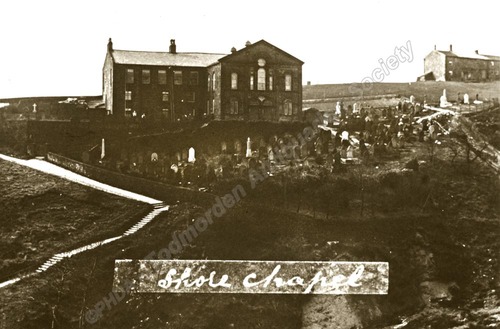

Someone had made a bonfire of their rubbish in what had once been the nave. The coving around the light fittings could clearly be seen and the wooden planks strewn over the floor had once been pews. The whole site is now overgrown with trees and so taking photos was difficult because so much of the building was obscured by the trees and also where I could see the building everything was in dark shade.
I’d read about a flight of stairs at the West side of the chapel. The church is perched right on the edge of the cliff and so the extensive graveyard appears to be falling down the hillside. 122 steps with an iron rail still present in places goes down to the Wattenstall River and, this being a Baptist church, people went down the steps to be immersed in the River as part of their baptism ceremony. Then they would climb back up the stairs for the service in the church. The General baptist Repository and Missionary observer of 1865 records that on June 10th Mr Gill baptised 41 people, 21 men, 20 women, the youngest candidate being 15, the oldest being 77. Some baptisms took place on Christmas Day when the ice on the stream had to be broken. It wasn’t until 1871 that the Baptistry was installed inside the church!
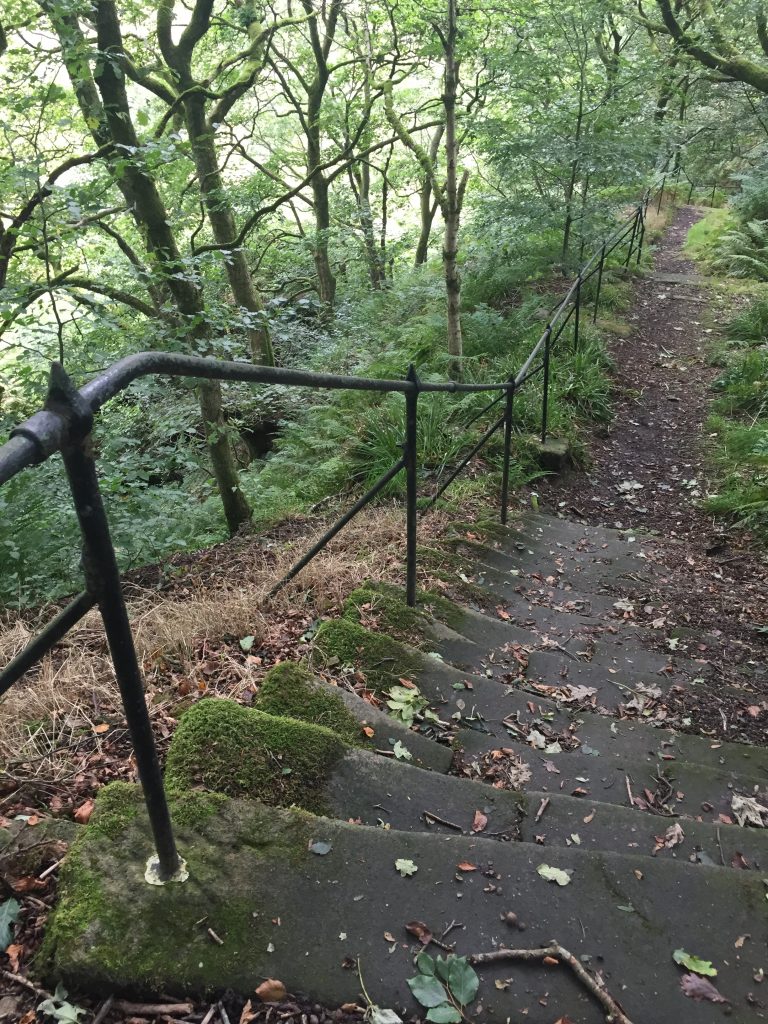
The church was founded in 1777 (just 2 years before the Piece Hall opened) by 7 people inspired by Dan Taylor from Birchcliffe Chapel, Hebden Bridge – which now serves as the area’s archive repository. (A couple of days later I was taking a walk along the steep Wadsworth Lane high above Birchcliffe when I noticed this plaque on a house):

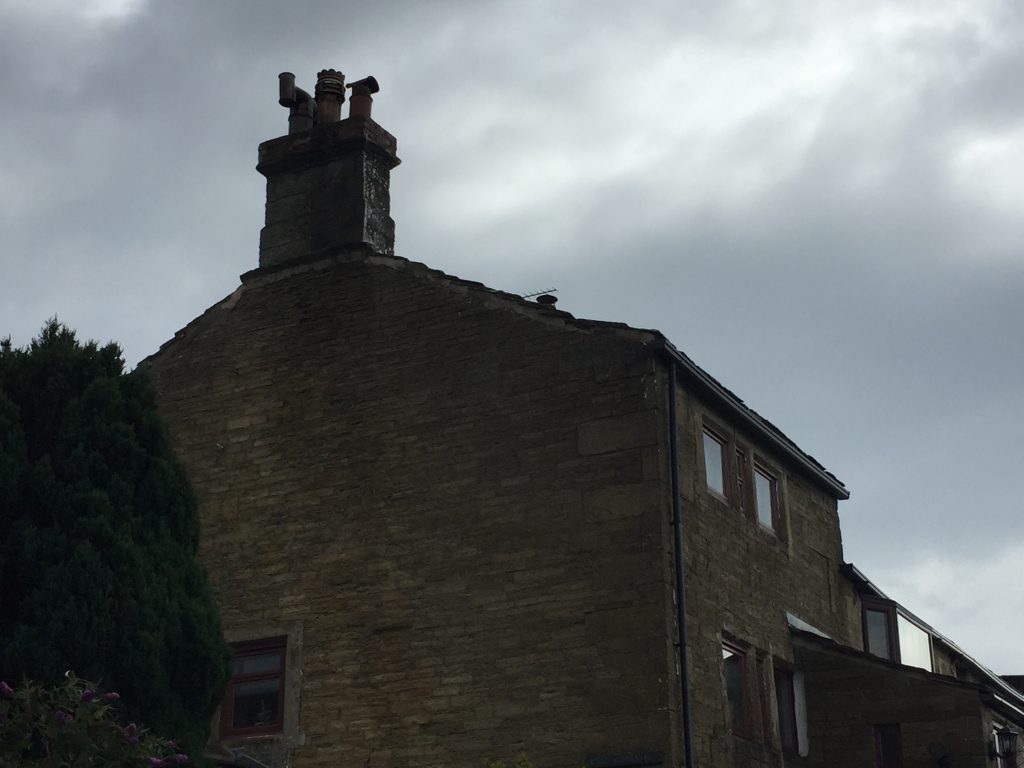
It transpired that it was one of my ancestors, Daniel Eastwood, who was responsible for the erection of the plaque. See : http://blog.hmcreativelady.com/?s=eastwood
In 1833 and again in 1871 the church was considerably enlarged reflecting the growth of the cotton industry in Cornholme. When the centenary was celebrated in 1877 the church had 265 members but by 1970 dry rot had set in and all services were being conducted in the adjacent Sunday School. In 1985 a decision was made by the church members that it should be demolished. However, that didn’t happen and 35 years later, here I was in the ruins. At length I found a newish looking sign posted on a door:
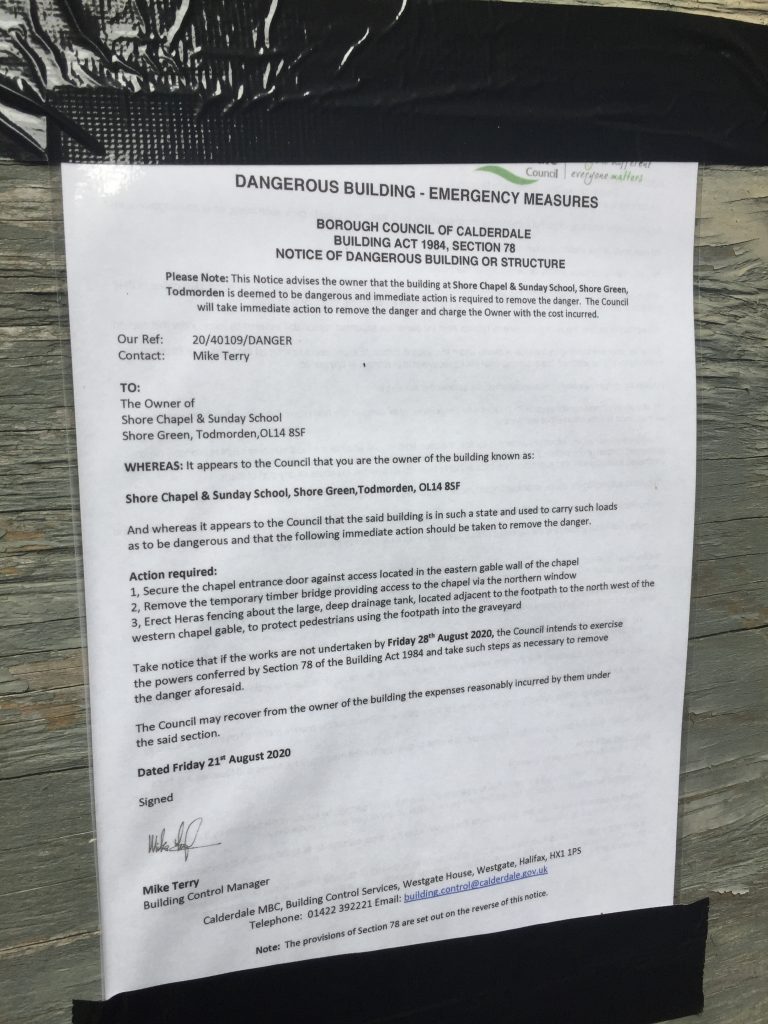
I’m so pleased that I visited when I did. Who knows when the council will take it upon themselves to demolish the place. From the notice it could be any day starting yesterday!
The video of a year in the church, 1971:
https://www.youtube.com/watch?v=0ystOsI6Kss&list=WL&index=68 Watching this made me think I was back at Affetside Sunday school, singing in the choir and I still have the books I was given at prize givings there. This is filmed at the Sunday school after the church had to be closed for good as being unsafe. My absolute double is in the children’s choir. Can you spot her?
Then watch a bit of this – minute 25-35 shows the church and seeing this was the catalyst that made me want to go and explore the church: https://www.youtube.com/watch?v=MeOaBq2jlmg
I also found a booklet at Todmorden visitors’ centre called the Story of Shore General Baptist Chapel’ by Les Marshall and George Lambert published in 2016 which includes this hymn written by Rev. J. Maden, minister of Shore 1868-1875
‘How rugged are thy paths, O Shore!
And yet we climb them more and more
Up to the sacred hill.
Thousands have gained that rocky height,
And gazed around them with delight
But we are pilgrims still.”
Why is Shore called Shore?. A couple of days later I found the answer in a booklet called ‘The Story of Shore General Baptist Chapel’ which I purchased at Tod visitors’ centre. Shore is an old English name for river bank or precipitous slope! The booklet tells of the anger and problems arising from a demolition order made in 1985 that has never been carried out.

Update – August 2023
Almost 3 years after my one and only trip to Shore Chapel I was sitting in my new living room late one evening just getting back into some family research after the upheaval of moving house when suddenly something on the screen cause me to shout out ‘Yes!’ in utter amazement. I have been going through the list of my over 3800 Nutton family relatives on Ancestry.com in a systematic way – alphabetically – and I’d arrived at Ellen Ingham, 1834-1897. Up popped a few ‘hints’ and there it was. A handwritten entry by the West Yorkshire non conformist register itemising the dates of birth of 5 Ingram children and the registrar was John Midgley, minister of Shore. So ‘yes’, one of my ancestral families attended Shore Chapel. I just knew it! From sites.rootsweb.com I found that ‘Church membership grew during the time of the church’s longest serving minister, Rev. J. Midgley, who was pastor from 1819 to 1844. This was at a time when the population of Todmorden increased rapidly. He started a Sunday School as soon as he commenced his ministry, and after 1825 this became an annual event. The minute books reveal that the children attending the Sunday School were separated during the church service, the boys attended chapel in the mornings and the girls in the afternoons. In 1864 it was recorded that it was dangerous to teach the girls around the stove because of the crinolines they wore.’ 1826 was the first recording of the Ingham family’s children so that was just a year after the Sunday School opened. (The extract is a little ambiguous). The first Ingham in the record reads ‘William, son of Thomas and Sally Ingham was born at —- Hirst in the township of Stansfield in the parish of Halifax was born July 3, 1826 at one o’clock in the afternoon. Registrar George Dean, but by the time at Ann was registered on May 8, 1929 Thomas and Sally were innkeepers, resident at Toad Carr. From previous research I had discovered that for over 75 years the Ingham family, first Thomas Ingham, then his son William and finally his grand daughter Ann ran the pub: In the Todmorden Almanac I found that ’Mr Thos. Ingham commenced selling drink at the Shoulder of Mutton Inn, Toad Carr, Dec 12, 1826. For my account of visiting the Shoulder of Mutton go to: http://blog.hmcreativelady.com/?s=jack%27s+place
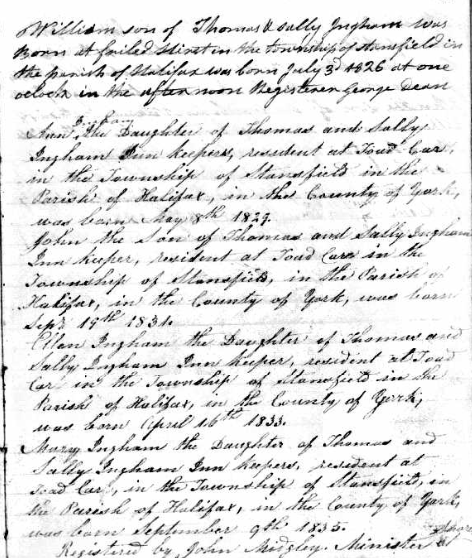
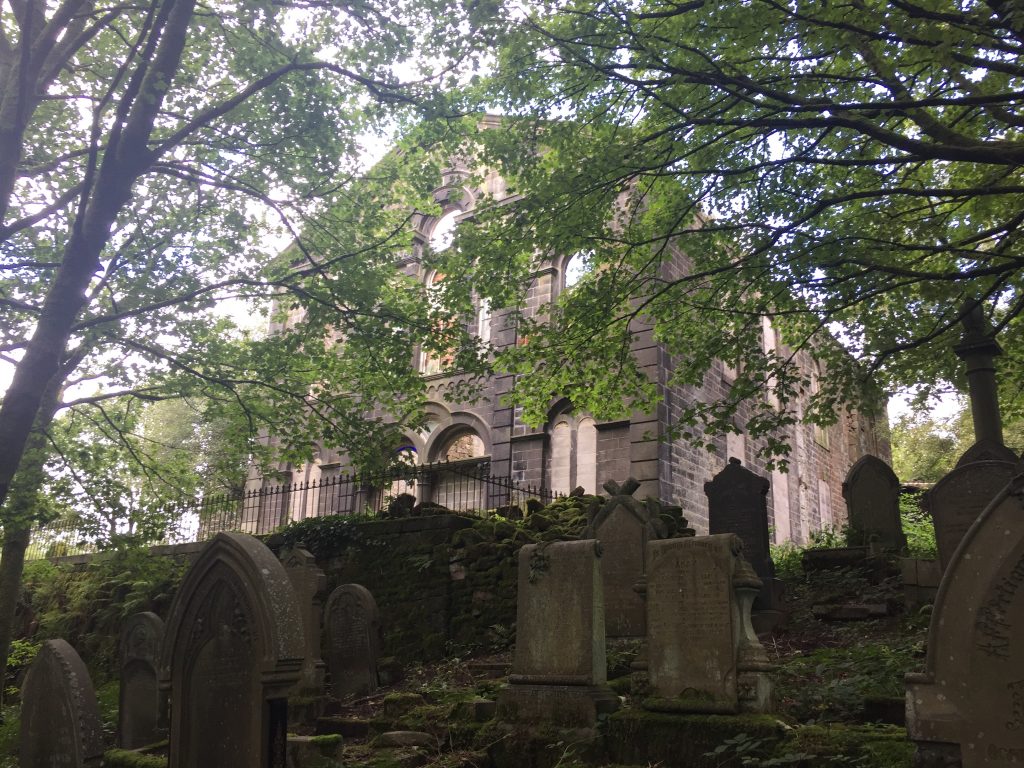
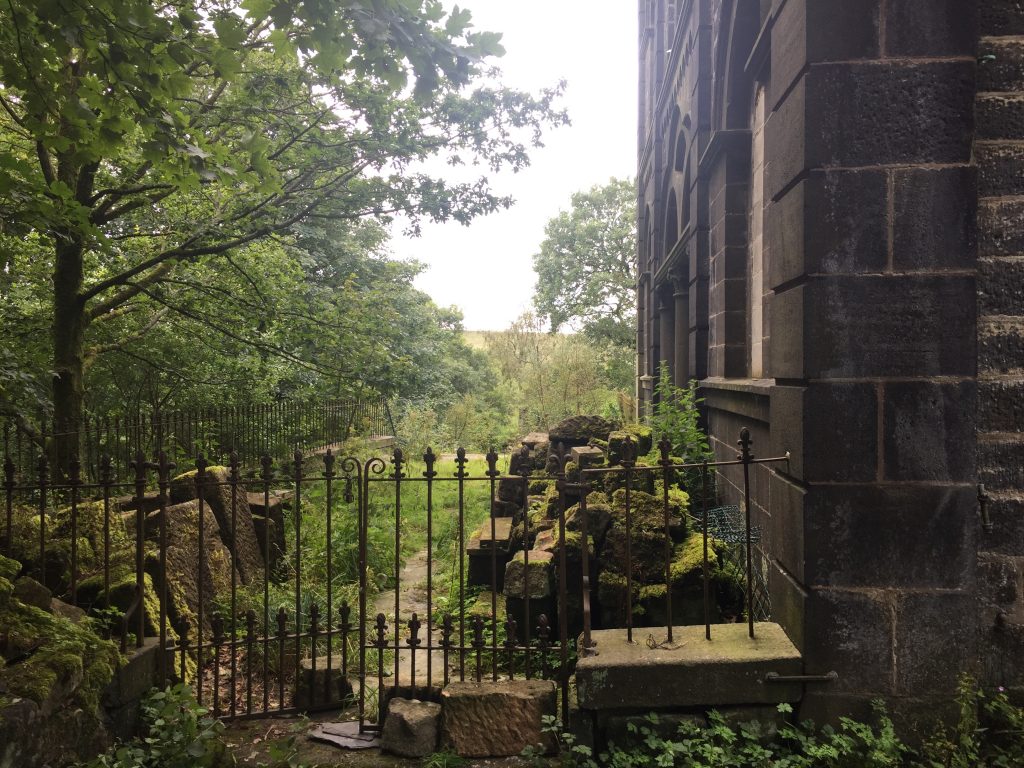
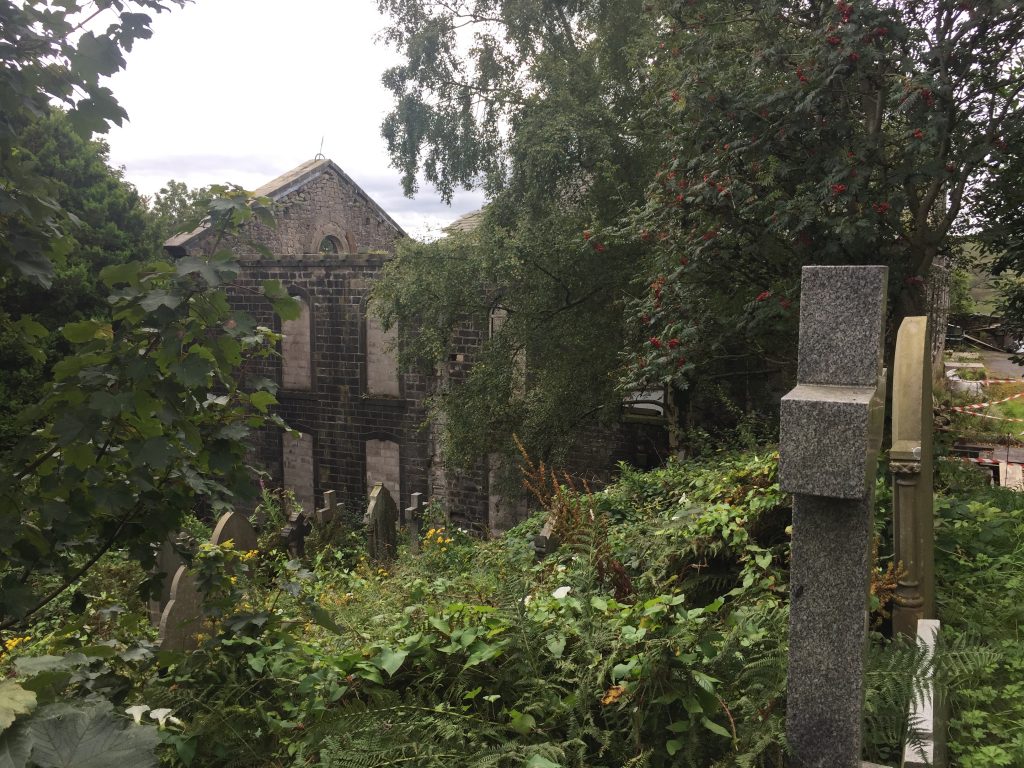
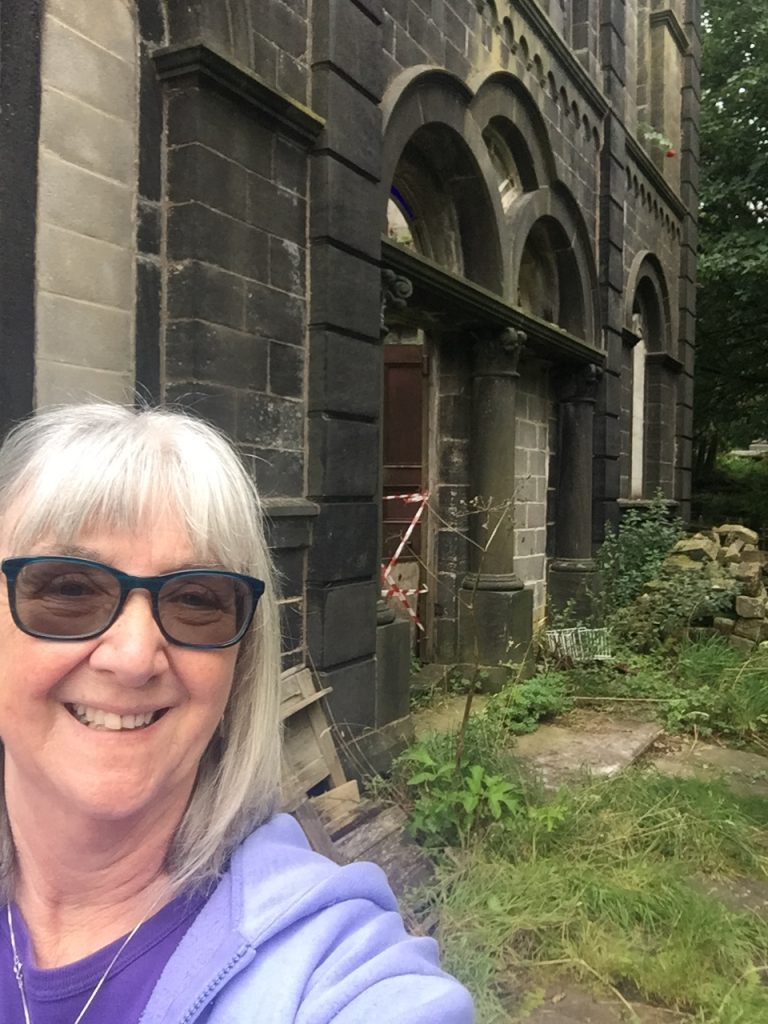
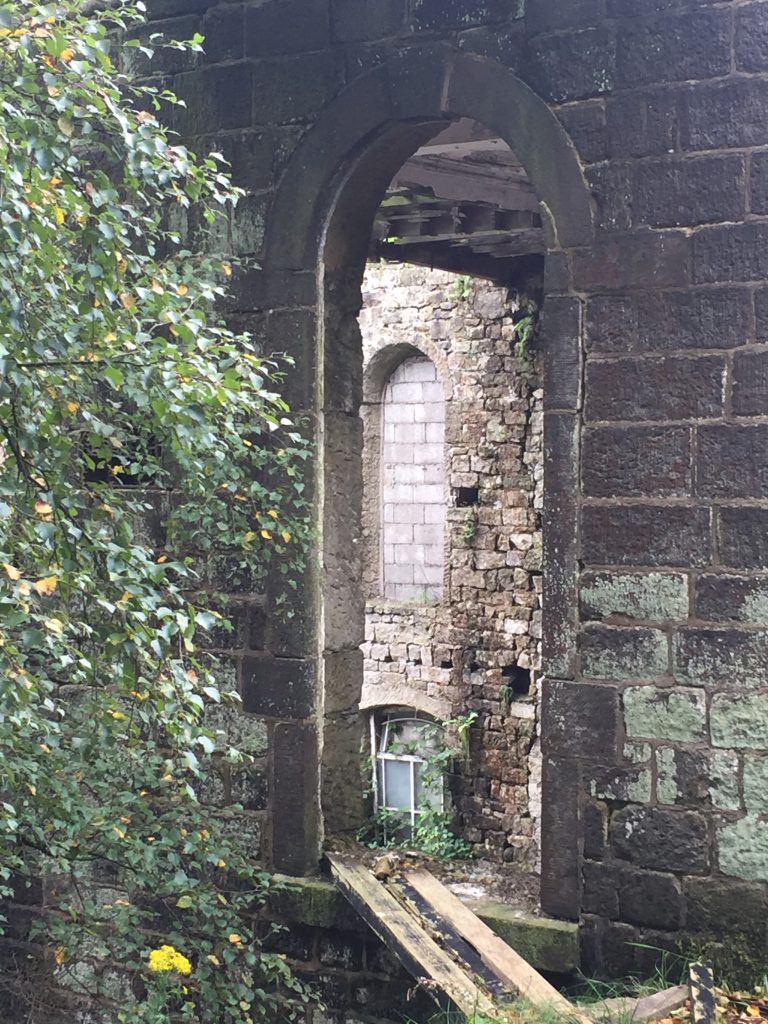
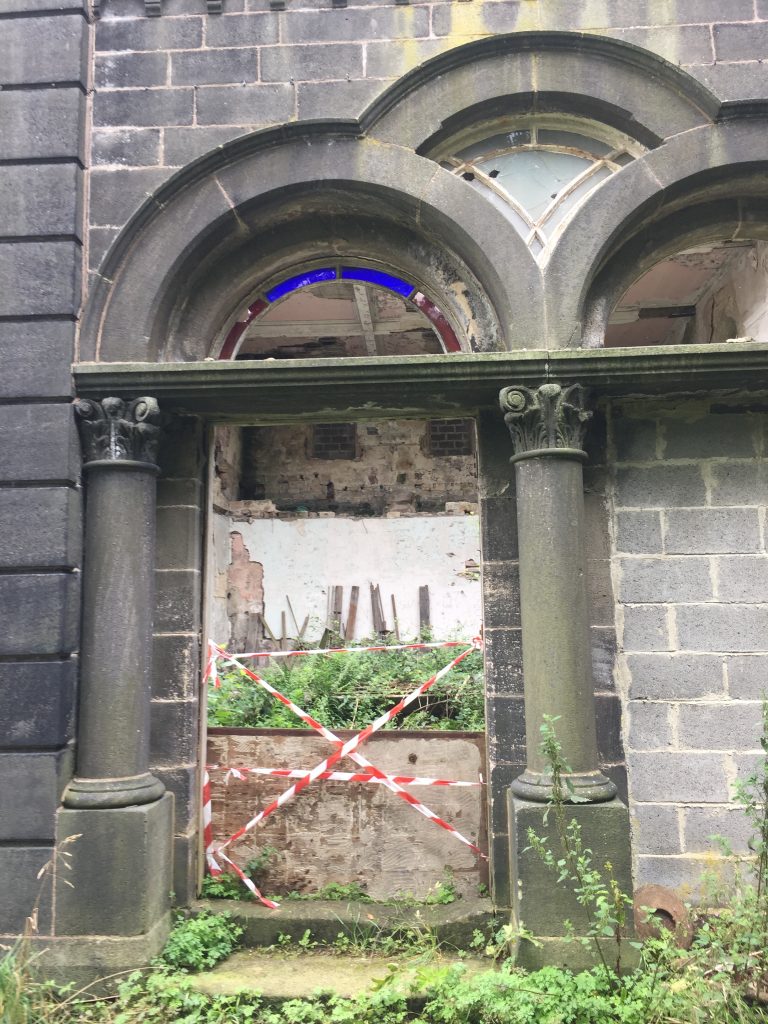
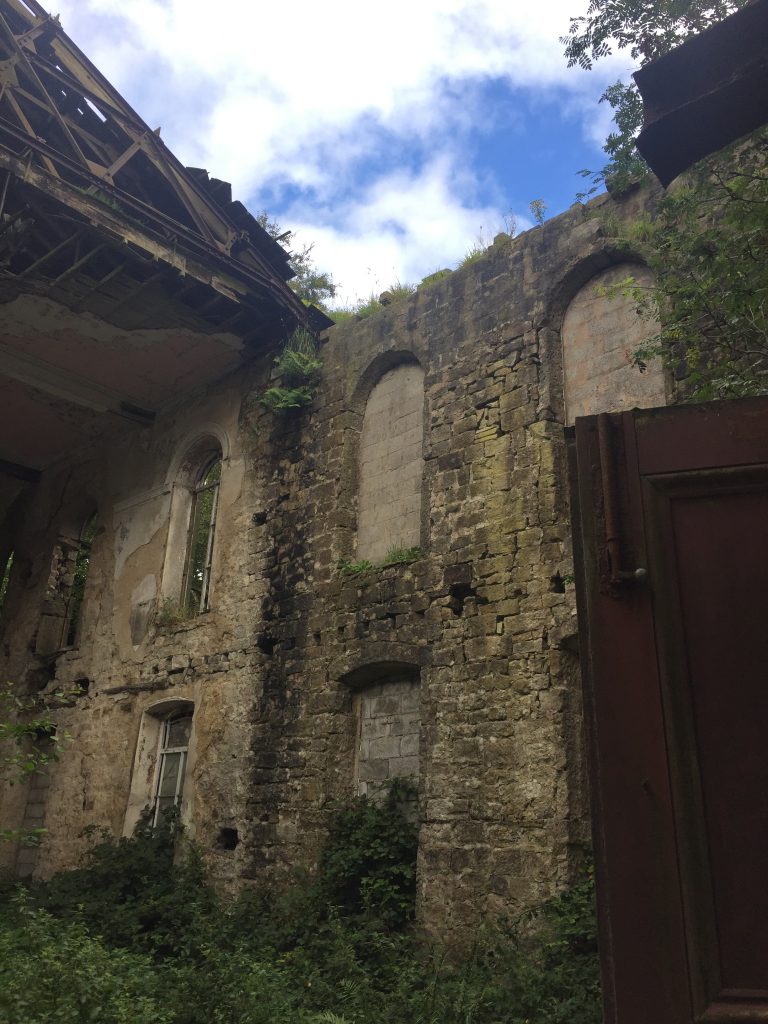

Dear Creative Lady
I was fascinated by your web pages on Shore Chapel. I am researching my great grandfather, Joseph Horsfall, originally a handloom weaver, who was Minister of Shore Baptist Chapel between 1852 and 1861. He was asked to leave, probably because, by then, he was running a spinning and weaving business at Calder Vale Mills, Todmorden.
But 2 things puzzle me: the first is that you refer to Shore Chapel as Methodist, but go on to say that people were baptised by immersion in the River Cliviger. Methodists and Baptists are not the same thing and, as far as I know, Methodists do not practise baptism by total immersion. Baptists do. Are there 2 chapels at Shore – one Baptist and one Methodist?
The second thing is that I have been corresponding with Keith Jones, a retired Baptist Minister and historian, who tells me that he was involved with closing the chapel and selling it for domestic use in the 1980s and that it is now a single storey house. As that is only about 40 years ago, your photos do not seem to reflect that.
You don’t say why you were visiting Shore Chapel. Do you have relatives that atteanded the Chapel?
I know more about my great grandfather’s life as a millowner, after 1862, than about his ministry. I am trying to find out what his attitudes were to slavery (because he bought cotton from the US) and to the working conditions of his employees, because cotton fluff caused tuberculosis in many workers when ventilation was inadequate, and to child labour, because this was legal after the age of 9 in those days.
Dear SUSAN COLWELL
I just saw your query to Creative Lady and think I can help on further details of the Horsfall family and the General Baptists of Heptonstall Slack (and Shore) My own Gt Gt grandfather, also an industrialist , is from the same Heptonstall Slack family (Joseph’s parents are my Gt Gt grandfather’s grandparents) I have details of Jospeh Horsfall from an article in the Halifax Antiquarian. The background is too involved to write up here but I can be contacted by email (annaenayat@gmail.com) Anna Enayat, Oxford
Thank you for posting your explorations. My last name is Shores, and my direct ancestor emigrated from there in 1663 to the Chesapeake Bay area. Evidently the hamlet of Shore there is where my family lived for generations, going back to 1100 (well that’s the farthest my records reach :-). Anyway, my wife and I will visit the area in May 2024, and I will definitely put Shore chapel ruins on the list. Thank you! Jim Shores